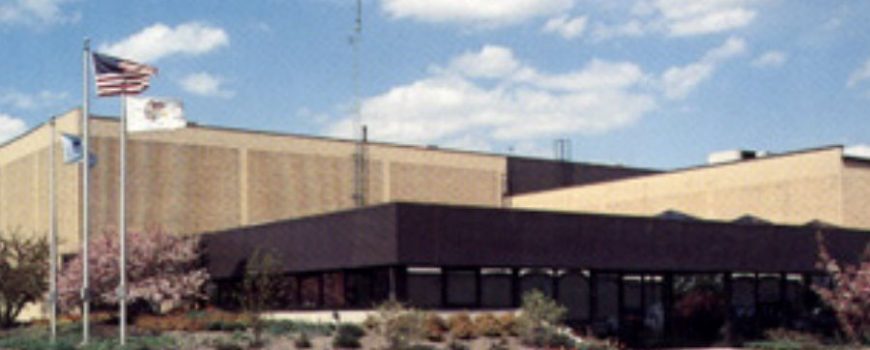Concrete Strong: The Answer to Industrial Construction
Concrete Strong: The Answer to Industrial Construction
Industrial buildings can serve many different purposes. They can house heavy or light manufacturing. With the explosive growth of e-commerce, many are used as warehouses or distribution centers. And, as more and more data is consumed daily, many industrial buildings are being built as data centers and as storage facilities for telecom equipment. No matter what an industrial building’s purpose is, concrete is a key material that is used throughout it. Concrete provides a host of advantages that other materials cannot.
Concrete is a Match for Industrial Building Needs
Fire Resistance
According to the National Fire Protection Association’s (NFPA) most recent stats, an average of 37,000 fires occur at industrial and manufacturing properties every year. These incidents have resulted in hundreds of civilian injuries and even some deaths, along with $1 billion in direct property damage. However, concrete offers a high degree of fire resistance, making it virtually fireproof. It has relatively poor thermal conductivity, and this slow rate of conductivity or heat transfer makes it effective in protecting adjacent spaces as well as the building itself. Unlike facilities made of other materials, concrete buildings often do not need to be demolished and rebuilt after a fire. Instead, they can be repaired, ensuring that usual business activities begin again rather quickly.
Handling Explosions
Explosions are often the cause of primary fires at industrial facilities. However, secondary fires often follow as a result of damage to equipment. Some of the primary causes of plant explosions include:
- Improper machinery maintenance,
- Undetected or unaddressed machine corrosion,
- Dirty or impure chemicals used in the manufacturing process,
- Employees not properly trained
Concrete deals with blasts much more favorably than other types of building materials. Blast load duration is very short compared to other types of extreme structural loads. With the mass of concrete, there is a direct resistance to the blast wave. Concrete can resist blast effects better thanks to it ductility and energy dissipation features.
Explosions not only cause fires, but often damage the fire containment or sprinkler system also, making concrete’s fire resistance property even more important.
Protection
Concrete structures offer an added layer of protection not offered by steel or wood buildings. This additional protection is possible due to the greater level of resistance that concrete provides. With concrete walls, robbers cannot use vehicles such as SUVs or trucks to ram into a building to gain entry. And, unlike steel walls, criminals cannot easily cut through concrete walls either to gain access.
Concrete not only provides protection against crimes, but also it offers better protection from natural disasters. Concrete structures can withstand powerful winds from hurricanes and tornados.
Finally, concrete walls provide protection for incidents that happen inside a facility too. They provide greater resistance to damage caused by vehicles such as forklifts and motorized hand trucks.
Cost Effectiveness
Initially, concrete may seem to be more expensive than other building materials. However, a key factor that needs to be taken into consideration is time. It takes much less time to build a concrete building than a steel one. Large sections can even be prefabricated off-site and then transported to the location during construction. And, when future repairs are required, they are much quicker, simpler and less expensive.
Machine Rebuilder Becomes Global Force
A machine service company, which quickly evolved into a machinery rebuilder, first opened its doors in a garage in Machesney Park, Illinois in 1995. Since its initial opening, the company has weathered the economy’s ups and downs rather well, now residing in a purchased facility located in the same town. The first building purchased was 18,000 square feet. However, soon after moving in, the company needed to expand because it began servicing companies not only from the U.S., but from all over the globe.
A member of the Northern Illinois Concrete Contractors was involved in the 20,100 square-foot expansion to accommodate this business’ growing needs. This addition enabled the company to house a 25-ton overhead crane, a climate-controlled environment, 35-foot ceiling height and 2-ton jib cranes at each machine building station. This sturdy expansion provides the company the ability to work on larger rebuilds and equipment manufacturing, which is necessary to serve heavy-equipment manufacturers.
Tough Times are No Match for Contract Machining Services Business
Since 1966 a Rockford-based precision contract machining services company has been producing medium to large components, up to 40 tons. When most manufacturers were either contracting or still reeling from the 2008 Great Recession, this company had big expansion plans.
These plans included assistance from a member of the Northern Illinois Concrete Contractors. The concrete contractor was key to constructing this company’s 33,000-square-foot addition. This extra space was built with the ability to support three 75-ton machining centers.
Concrete and Industrial Buildings are a Perfect Match
Industrial buildings must be built to ensure the safety and protection not only of its employees and machines, but also of the surrounding community. Concrete offers many benefits, making it the perfect building material for these facilities.
If a new facility or an expansion is in your future plans, members of the Northern Illinois Concrete Contractors are here to help. Over the years, they have been involved in the construction of manufacturing plants, warehouses/distribution centers, storage facilities and many other types of industrial buildings. Visit our online directory to find the perfect match for your next industrial project.

